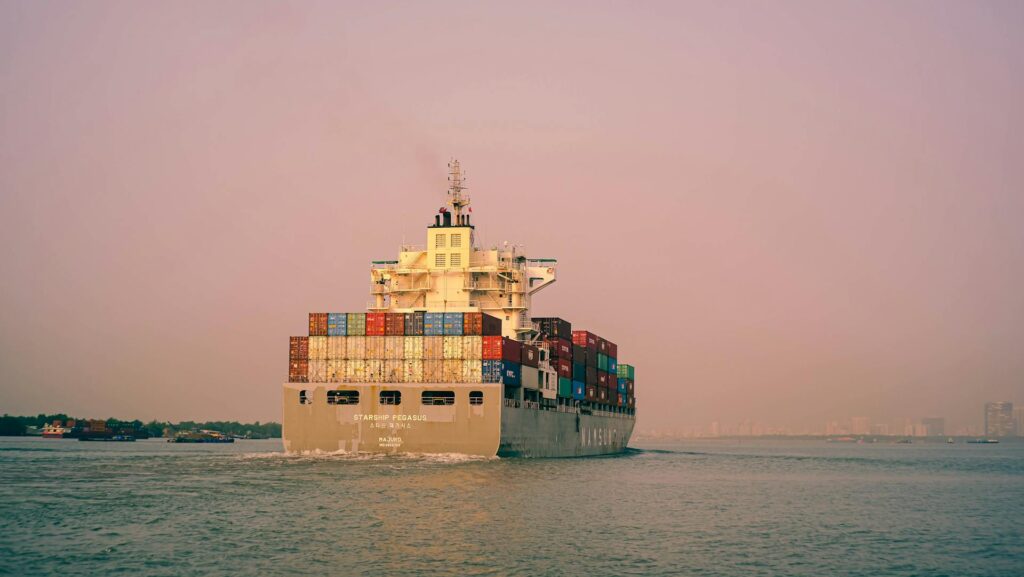
Against the backdrop of global economic integration, trade between China and the United States remains extremely frequent. As a core indicator of maritime transportation costs, any fluctuations in China-US ocean freight rates draw significant attention from all stakeholders. Recent adjustments to China-US tariffs have triggered notable changes in these rates, impacting not only the operational costs of foreign trade enterprises but also influencing the entire shipping market.
Recent Changes in China-US Ocean Freight Rates
Following the May 12, 2025 Geneva high-level economic and trade talks between China and the US, which announced significant reductions in bilateral tariff levels, the global shipping and logistics market reacted swiftly. A 90-day tariff exemption period for bilateral trade began on May 14: China reduced tariffs on US imports from 125% to 10%, while the US cut tariffs on Chinese imports from 145% to 30%. This policy adjustment sent ripples through the market, placing China-US ocean freight rates firmly in the spotlight.
Major shipping companies preemptively adjusted their US route freight rates ahead of the first wave of booking surges by exporters. On May 15, some carriers initiated price hikes of $500-$700, marking just the beginning of rate adjustments. Subsequent reports indicated that from June 1, increases expanded to $2,000-$3,000, with China-US freight rates on the West Coast route even reaching $6,000 at one point. MSC, the world’s largest container shipping company, plans to introduce a Peak Season Surcharge (PSS) of up to USD1,600/2,000/2,000 starting June 1. After the surcharge, ocean freight rates for 40-foot containers to major West Coast ports (VAN/LGB/LAX/OAK/SEA) are expected to return to USD6,000, a substantial surge from previous levels.
Matson also notified customers of a $1,500 increase per 40-foot container from Shanghai, Ningbo, and Xiamen to the US, effective May 22. Compared to the May 10 Shanghai Shipping Exchange data of $2,347 for West Coast 40-foot container rates, this represents a 64% increase. ONE announced a $1,000 hike for FAK 40-foot containers on the US route, with plans to introduce a larger PSS of up to $2,000 per container on May 21. Evergreen Marine plans a GRI increase of $700 for 40-foot containers between May 15 and 31, bringing West Coast rates to $3,100. Other carriers like HMM and COSCO have also announced rate hikes of $800-$1,000 starting May 15.
Shanghai Shipping Exchange data shows the May China-West US route Container Freight Index (SCFI) reached 4,200 points, a new high since 2022. The average Shanghai-West US container shipping index rose 32% week-over-week to $3,091, while East Coast rates increased 22% to $4,069, reflecting a clear and significant upward trend in recent China-US ocean freight rates.
The “Preemptive Shipment Surge” and Rising Freight Rates
The drastic tariff adjustments have presented foreign trade enterprises with opportunities to reduce costs and increase profits. During the 90-day tariff window, companies have launched a “preemptive shipment surge” to export goods before potential future tariff changes. Factories in the Pearl River and Yangtze River Deltas are working overtime, while cross-border e-commerce enterprises have rapidly lowered prices to attract orders, with some reporting daily order surges exceeding ¥5 million.
Market feedback shows that port bookings in Ningbo and Shanghai now require three weeks’ advance notice, while truck traffic at Shenzhen’s Yantian Port has increased by 20%. Yangtze River Delta ports anticipate upcoming shipping peaks. Data from trade tracking firm Vizion shows that after the tariff cuts, container shipping bookings from China to the US surged nearly 300%. This explosive order growth has disrupted the previously balanced supply-demand relationship in the shipping market, causing severe cabin (cargo space) shortages and directly driving up freight rates.
A Shenzhen electronics factory that planned to ship in June had to advance its schedule to late May but faced a three-week booking backlog. Ningbo Port reported a 25% year-over-year surge in May container throughput, but a container return rate of less than 60% further strained capacity. Freight forwarders’ commissions rose from ¥500 to ¥1,000 per container, yet guaranteed space remained scarce. Under this shipment rush, China-US ocean freight rates continue to climb, becoming a cost pressure that foreign trade enterprises must confront.
Analysis of Causes for Freight Rate Changes
Supply-Demand Imbalance
On one hand, the tariff-adjustment-driven shipment surge has caused a short-term explosion in transportation demand for Chinese exports to the US. Backlogged orders from numerous enterprises have led to a spike in cargo space demand. On the other hand, due to previous US-China trade frictions and reduced freight volumes, shipping companies had cut container capacity and redeployed it to other routes (e.g., Far East-Europe). This has left current US route capacity unable to meet sudden demand, worsening supply-demand imbalance and driving rate increases.
Shipping Company Strategy Adjustments
As major players in the shipping market, carriers’ operational strategies directly influence freight rates. Facing sudden demand growth, companies have raised rates to maximize profits. Additionally, considering the July-September peak shipping season and the 90-day tariff buffer period—during which US importers are expected to advance shipments—carriers have preemptively raised prices and controlled cargo space release to optimize long-term gains. Such strategic shifts have directly driven short-term rate surges.
Port Congestion and Other Factors
Major US ports like Los Angeles often face congestion, which has worsened with recent freight volume increases. Extended waiting times for loading/unloading outside ports have reduced vessel efficiency and effective capacity. Factors like port operational efficiency and infrastructure also affect cargo handling speeds and shipping cycles, collectively contributing to rising freight rates.
Conclusion
Recent changes in China-US ocean freight rates stem from multiple factors, with tariff adjustments serving as the key trigger. The shipment surge has caused supply-demand imbalances, while carrier strategies and port congestion have further exacerbated rate increases. For foreign trade enterprises, these hikes have raised operational costs and squeezed profit margins, necessitating proactive measures like transshipment trade, air freight substitution, and renegotiating freight cost sharing with clients.
In the long term, stable US-China trade relations are crucial for global economic and shipping market health. Future freight rate trends will depend on factors like trade volume changes, carrier capacity adjustments, and port efficiency improvements. Market participants must closely monitor dynamics and flexibly adjust strategies to navigate the evolving China-US ocean freight landscape.





